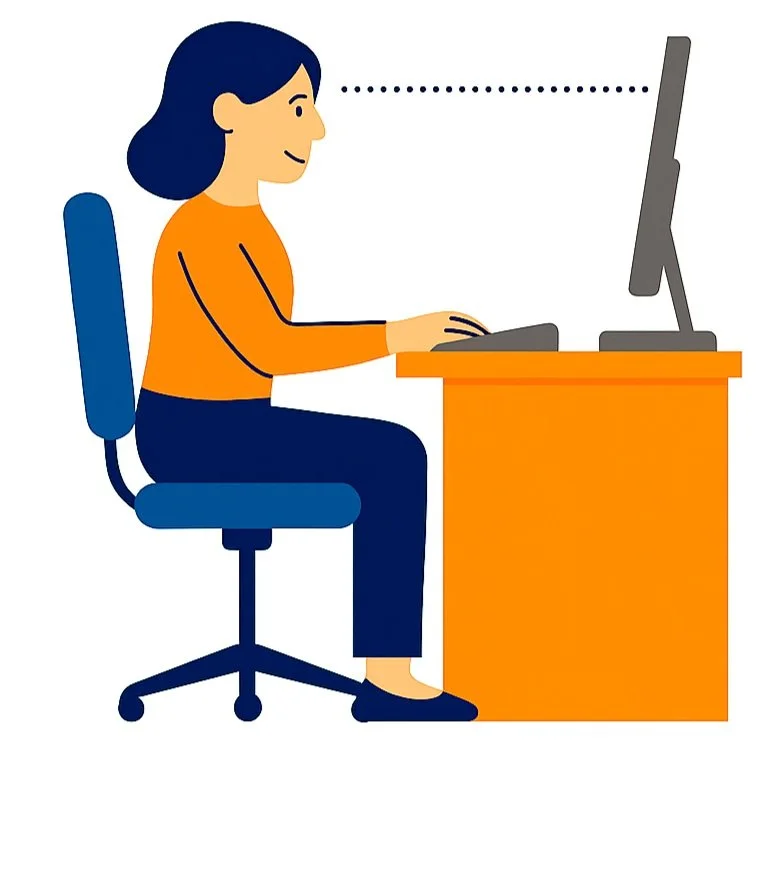Ergonomics at Work: How Smarter Posture Boosts Office Performance
If you’re like most office workers, you spend 6–10 hours a day at a desk. But did you know that how you sit, type, and even glance at your screen can affect your health, focus, and long-term productivity? That’s where ergonomics—and proper training—come in.
What Is Ergonomics in the Office?
Ergonomics is the science of designing a workspace that supports your body’s natural posture and movements. In an office setting, this means adjusting your chair, desk, monitor, keyboard, and even your habits to reduce strain and prevent injury.
Why Office Ergonomics Matter
Poor ergonomics can lead to:
Neck and back pain
Carpal tunnel syndrome
Eye strain and headaches
Fatigue and reduced concentration
These issues don’t just affect comfort—they impact productivity, increase sick days, and can lead to long-term health problems. The Canadian Centre for Occupational Health and Safety (CCOHS) emphasizes that ergonomic hazards—like awkward postures, repetitive movements, and static forces—are common in office environments and must be addressed proactively.
The Power of Ergonomic Training
While ergonomic equipment is important, training is the key to lasting change. Many office workers don’t realize they’re using their equipment incorrectly or developing harmful habits over time. That’s where structured training makes a difference.
Effective Ergonomic Training Can Help:
Identify risk factors in your current setup
Teach proper posture and movement techniques
Promote healthy habits, like taking microbreaks and stretching
Empower employees to adjust their own workstations confidently
Reduce workplace injuries and improve overall morale
Studies show that companies that invest in ergonomic training see fewer musculoskeletal complaints, lower absenteeism, and higher employee satisfaction. A 2023 report from the Ottawa Police Service found that ergonomic assessments and training led to a 22% increase in proactive interventions, helping reduce injury frequency and severity. According to Canada’s Hazard Prevention Program Regulations, employers under federal jurisdiction are required to implement ergonomic hazard controls, including employee education and training.
Quick Ergonomic Tips for Office Workers:
Monitor at eye level – Your screen should be directly in front of you, with the top aligned with eyes.
Feet flat on the floor – Or use a footrest if needed to accommodate desk height.
Wrists neutral – Keep them straight, not bent, when typing or using a mouse.
Take microbreaks every 30–60 minutes to stretch and reset.
Move often – Take a 1–2 minute break every 30 minutes to stretch or walk.
Final Thoughts:
Ergonomics isn’t just about fancy chairs or standing desks—it’s about knowledge, awareness, and daily habits. With the right training, office workers can take control of their comfort, reduce injury risk, and perform at their best.
Ready to take the next step toward a healthier, more productive workplace?
Book an ergonomic assessment or a seminar/ webinars to empower your team with the tools and training they need to thrive.



